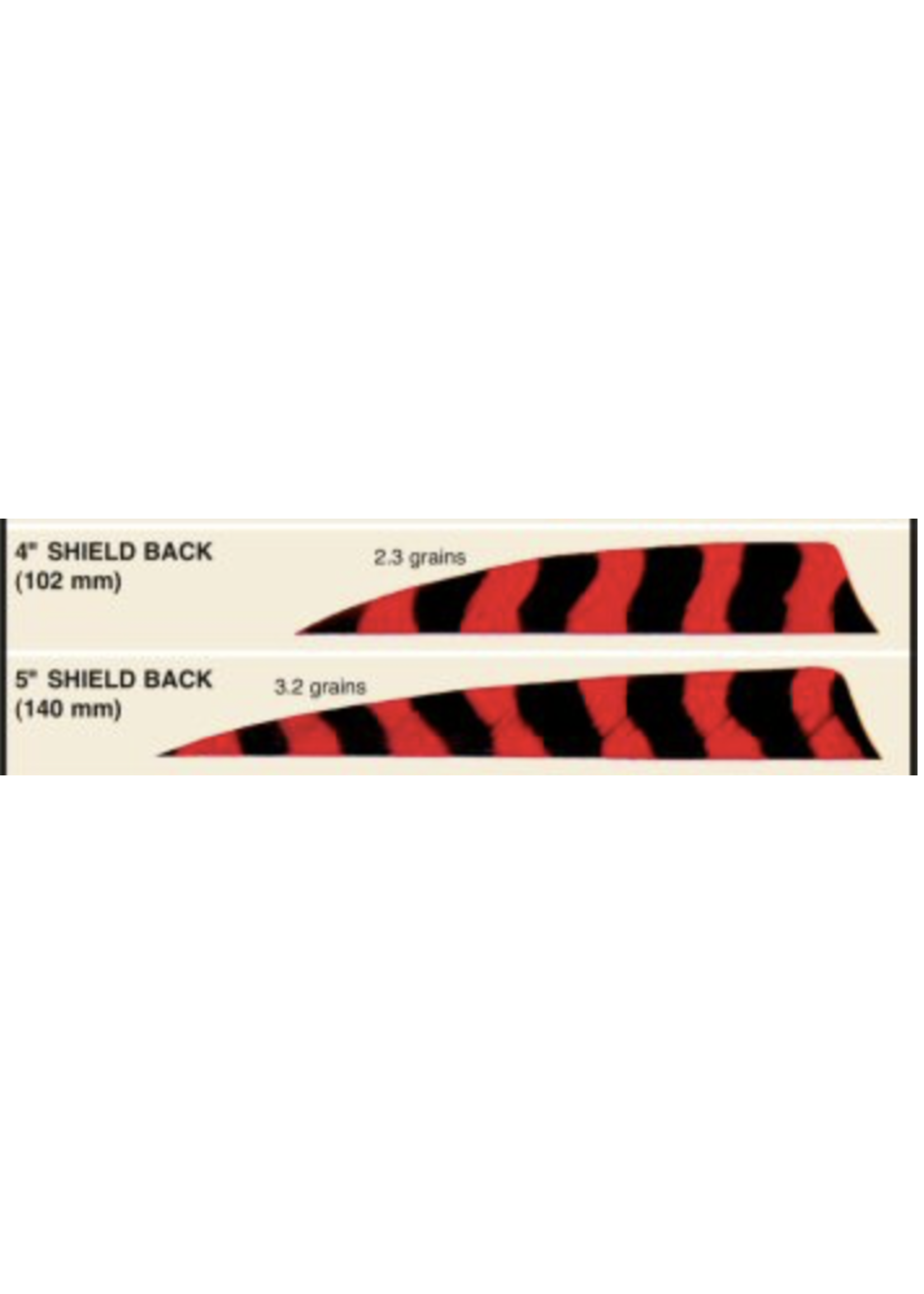TRUEFLIGHT FEATHERS
What size feathers should I use?
In general, for hunting arrows tipped with broadheads, we have found three 5 inch feathers or four 4 inch feathers work well. Light weight carbon arrows have been successfully fletched with three 4 inch feathers. Due to individual differences in equipment and shooting style, larger feathers may be required. It is also possible that good flight can be achieved with smaller feathers. Test shooting is the best way to decide on any particular set up.
It is important to remember that broadheads will need more guidance than field points. It is also extremely important that broadhead equipped arrows fly "dead straight" with no yawing or fishtailing. An arrow that is yawing down range is not only inaccurate, but if it hits game it loses much of its penetration.
I'm right handed, should I use right wing or left wing feathers?
You can successfully shoot either wing. An arrow does not rotate noticeably until it is well clear of the bow.
Left wing feathers should be used to rotate the arrow counter clockwise, right wing clockwise (as viewed by the shooter).
How can I tell if my feathers are right or left wing?
First method: Look at the nock end of an arrow (as though it is about to be shot), and rotate it so that one fletching is on top of the shaft. If the "catch lip" is to the left of the web, it is a right wing feather. If the "catch lip" is to the right of the web, it is a left wing feather (see diagram)
Second method: Hold the forward end of a diecut (pointed end) or full length feather (large end) toward yourself. Look down from the top. Rotate the feather so that its web is horizontal and its natural curve droops the end pointed away from you downward ("shedding rain" as opposed to "catching rain"). If the web is to the right of the quill base, it is a right wing feather. If the web is to the left of the quill base, it is a left wing feather.
Should I use RIGHT wing with a RIGHT helical clamp, and LEFT wing with a LEFT helical clamp?
Yes. RIGHT wing for a RIGHT helical clamp. LEFT wing for a LEFT helical clamp.
Should I use straight, offset or helical fletching clamps?
We strongly recommend offset or helical fletching on all arrows.
Offset or helical fletching causes the arrow to rotate in flight just like the rifling in a gun barrel causes bullet to rotate. This is extremely important. The rotation acts like a gyroscope to stabilize the arrow. This rotation also "averages out" any slight microscopic imperfections in the arrow.
This advantage was reportedly first noticed in smooth bore muskets, shooting round lead balls. The smooth bores were accurate to about 50 yards. However simply adding rifling to the barrel (or even angled scratches inside the barrel!) caused accuracy to improve enough so that the accurate range became 150 yards. This increase was apparent even when shooting the same round lead balls.
Helical fletching offers more stability than a simple offset and is therefore the first choice for any arrow tipped with a broadhead.
How much fletching offset should I use?
If the forward end of a 5 inch feather is 1/16 inch offset from the rear, this equals about 3/4 of one degree. We find this works well for most offset or helical fletched arrows
How far forward from the rear of the arrow should I place the feathers?
The rear of the feathers should be far enough forward to clear the shooters fingers or release mechanism when releasing the string. For finger shooters this is usually about 1 to 1 1/2 inches or 25 to 38 mm.
The feathers should also be far enough forward so that their bases can be securely attached to the shaft, not the nock.
All else being equal, the further to the rear the feathers are, the more efficient the guidance. The feathers should not be any further forward than is necessary for clearance.
Do "Round Back" (or "Parabolic") and "Shield Back" fly differently?
We haven't been able to detect any difference in the performance of round back or shield back. It appears that the only difference is one of appearance. Round back are more popular in the United States; shield back are more popular in Europe.
What adhesive should I use to fletch feathers?
Any good fletching adhesive will work well with feathers.
Instant fletching glues are available, and very convenient "feathers fletching tape" has just come on the market. All work very well with feathers.
How should I prepare the quill base of the feather for fletching?
The base of every "Trueflight Feather" is ground clean and dry in our processing. No further preparation is needed.



